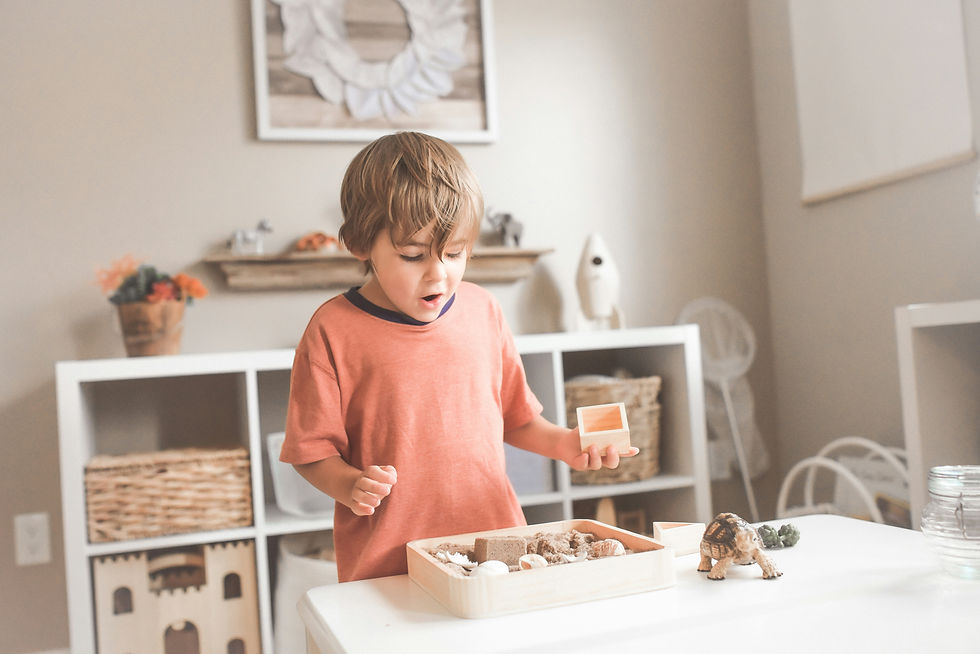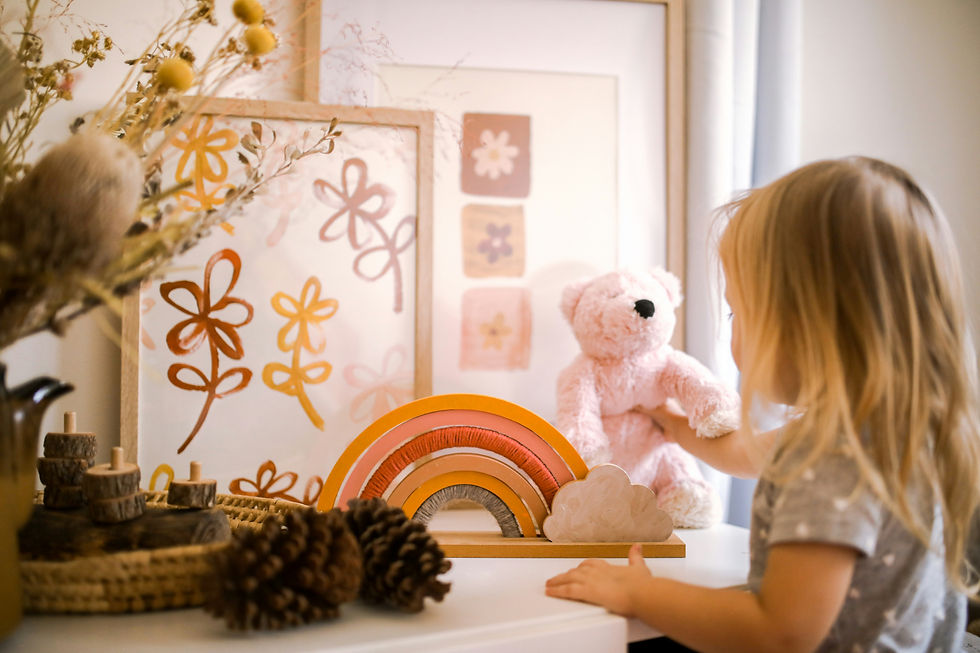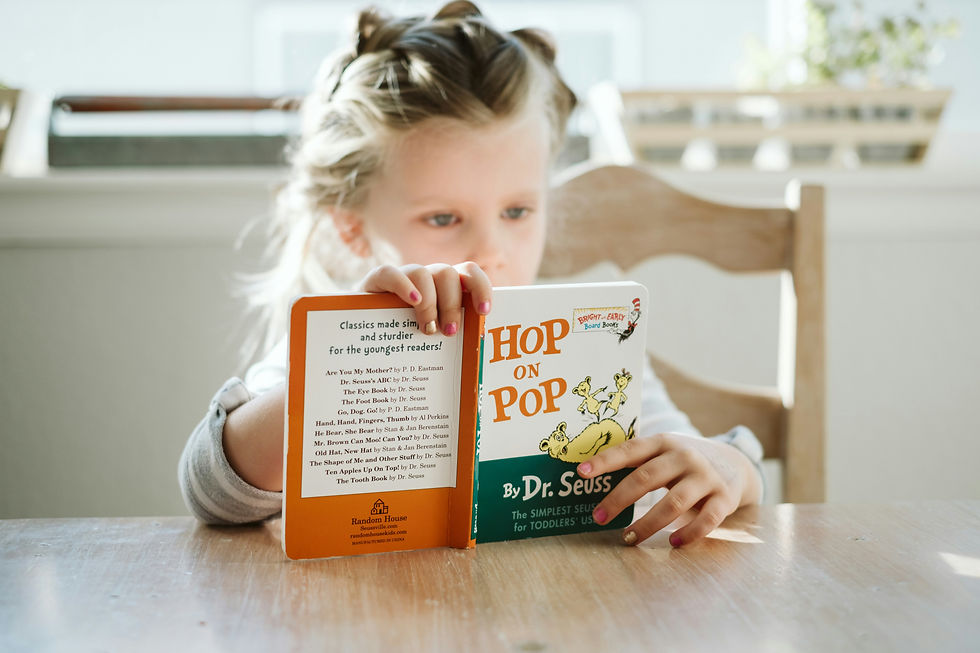How to Decorate the Ideal Playroom or Homeschool Room For Your Kids
- Lauren Brantley
- Sep 3, 2024
- 4 min read

Whether you’re homeschooling your children or you’re trying to provide a place for them to continue learning at home, a play or schoolroom is a great option. Many children do homework in their bedrooms or at the kitchen table, but this is sometimes a flawed option. You need to design your home for the needs and happiness of your family.
It’s often best for your kids to have a quiet place to work where they aren’t likely to be distracted. A dedicated room also allows you to store all of your child’s things in one handy place, so it doesn’t end up scattered throughout the house. This is also why doubling the schoolroom up as a playroom can be a good idea. It keeps the rest of your home clean.
So, what do you need for the ideal school or play room for your children?
Plenty of Storage
First things first, you need to be able to put things away. Dedicated storage for toys, books, bags, and whatever else your children use will make sure the room is organized and that you know where everything is.
There are a few options for storage. Bookshelves are an obvious choice for books, and draws or filing cabinets can be ideal for paper and workbooks. You can use files to keep them more organized so you can find what you need when you need it.
Box or cube storage is the perfect solution for storing toys and art supplies. After all, you want storage that’s easy to access, attractive, and practical all at once. Cube storage hides all of your sins, and some of your children’s toys as well. You can also label the cubes so you can still grab what you need quickly and easily.
Toys and Play When Learning
It might seem counterintuitive to keep toys in a room designed to help your kids concentrate on learning. But it can be helpful, especially when you have younger children. Older children are more independent and can be left to work, but you’ll often have to be nearby when small children learn, or you’ll be the one teaching them.

Young children learn especially well through play. It’s fun, memorable, and engages different parts of their brains. Some toys and games are especially designed to help children learn.
For example, let’s talk about Lego. Lego bricks are small and interlock with each other. A lego set is like a 3D puzzle, as your child has to figure out which bricks go where and how to put them together. A Lego project can be a fantastic way to teach your child how to follow instructions, how to put things together, and how to handle small objects carefully. Even better, it’s a lot of fun and they’re rewarded with a figure to display or play with.
You might also want to keep art supplies in the playroom. Art is a great way to learn and explore creativity. Not all children are artistic geniuses, but they can all have fun and learn how to express themselves in different ways.
Room Dividers
Depending on how much space you have or your children, room dividers might become your best friend. If you don’t have room for a dedicated play or school room, a divider can provide the privacy your child might need in the living room or another room in your home. It’s the same principle as creating a home office without a dedicated room.
Room dividers can also be helpful for larger rooms. If you want to split the play and school parts of the room up, a divider provides a natural barrier. This helps your child stay focused on what they’re doing now, not what they might be doing later.
If you have a few children of different ages, they might not want to work together on certain projects. A divider can allow your children to concentrate on their projects or homework, rather than distracting each other.
Furniture and Workspaces
Your kids can’t just work on the floor for everything. It’s best to provide tables, desks, and chairs for them to work comfortably from. These don’t just have to be for homework either. A desk is incredibly useful when your child is trying to draw and do more creative or fun things.

If possible, the desk should be kept clear when its not in use. This means that, rather than having to move everything around before your child can start work, they can get going right away. Use the opportunity to teach your child practical skills like how to keep their room clean and organized.
Other Decor and Posters
Nobody wants a boring and drab classroom, and the same applies at home. Make sure your schoolroom is full of useful and interesting decorations.
You can find things to hang on the wall like this AVID growth mindset poster to encourage your kids to stay focused on their goals. It’s also helpful to have maps, calendars, and schedules on the wall so they’re easy to see.
Speaking of schedules and calendars, use these tools and teach your children to use them. Do they have deadlines coming up for specific projects or homework? Do they have exams in the future to revise for? Help your child learn how to be organized and work to a schedule.
It’s also a good idea to allow your kids to help you decorate the schoolroom. After all, it’s a room for them. Come up with ideas together and execute them as part of your art project. Again, this gives your kids something to look forward to and work on, so they can be proud of what they’ve done.
Teaching at home doesn’t have to be a drag for the parent or the child. Teaching should be designed with your child in mind, so you need to consider their needs, wants, skills, and interests. A dedicated schoolroom where they can also play and work on personal projects is a great way to help them in this regard.





Comments